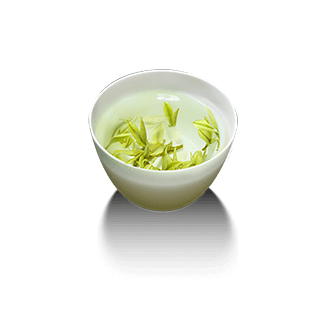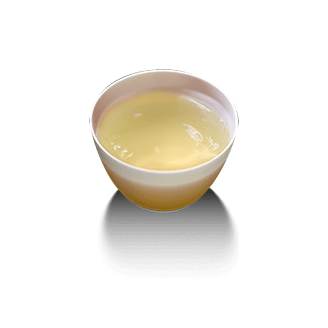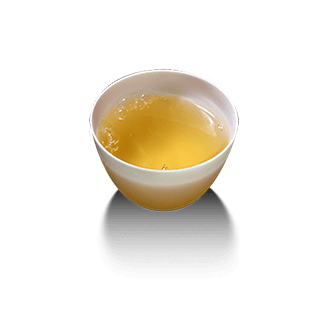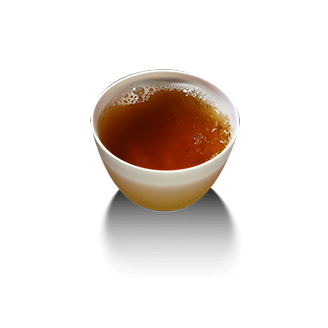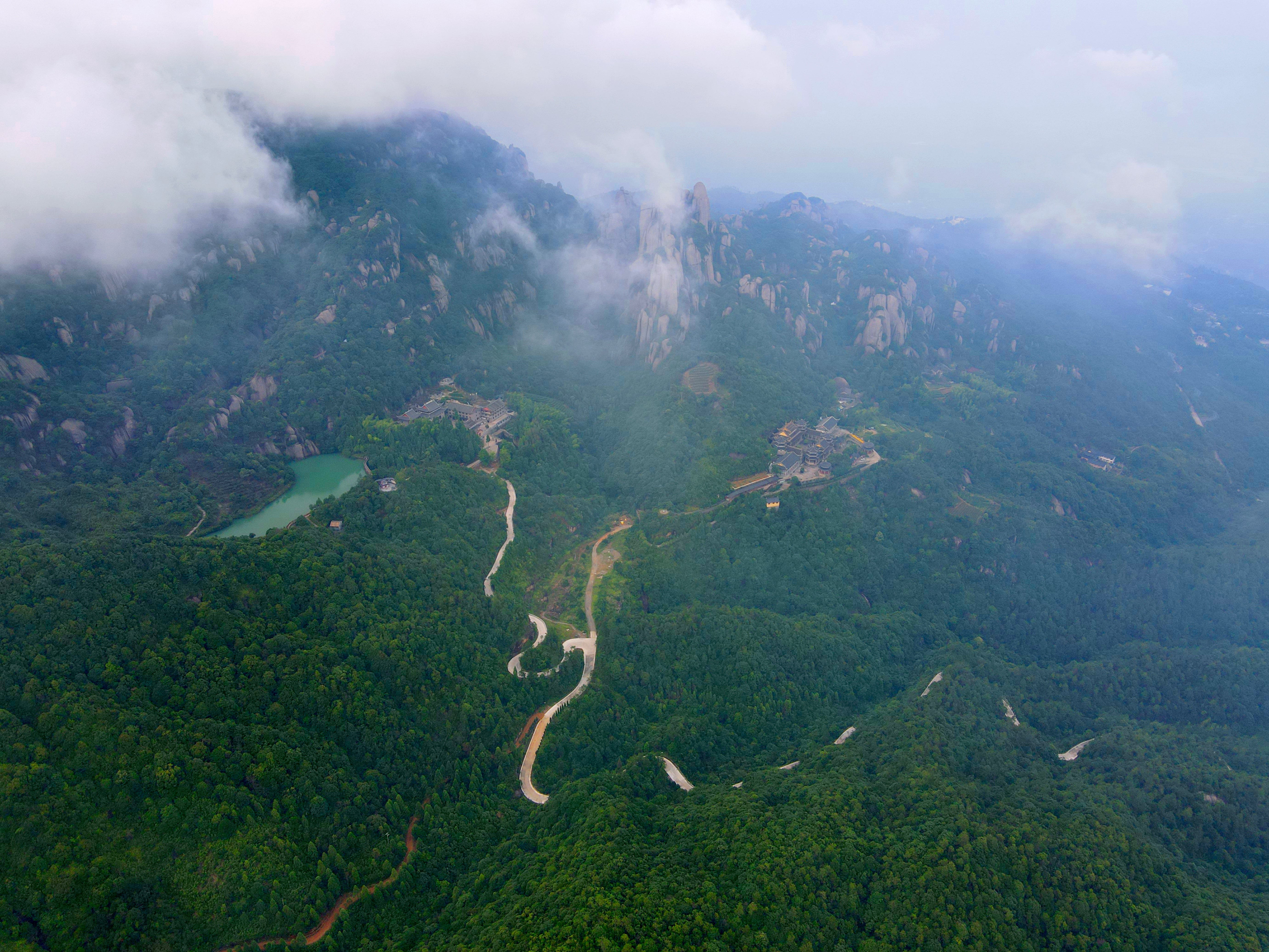
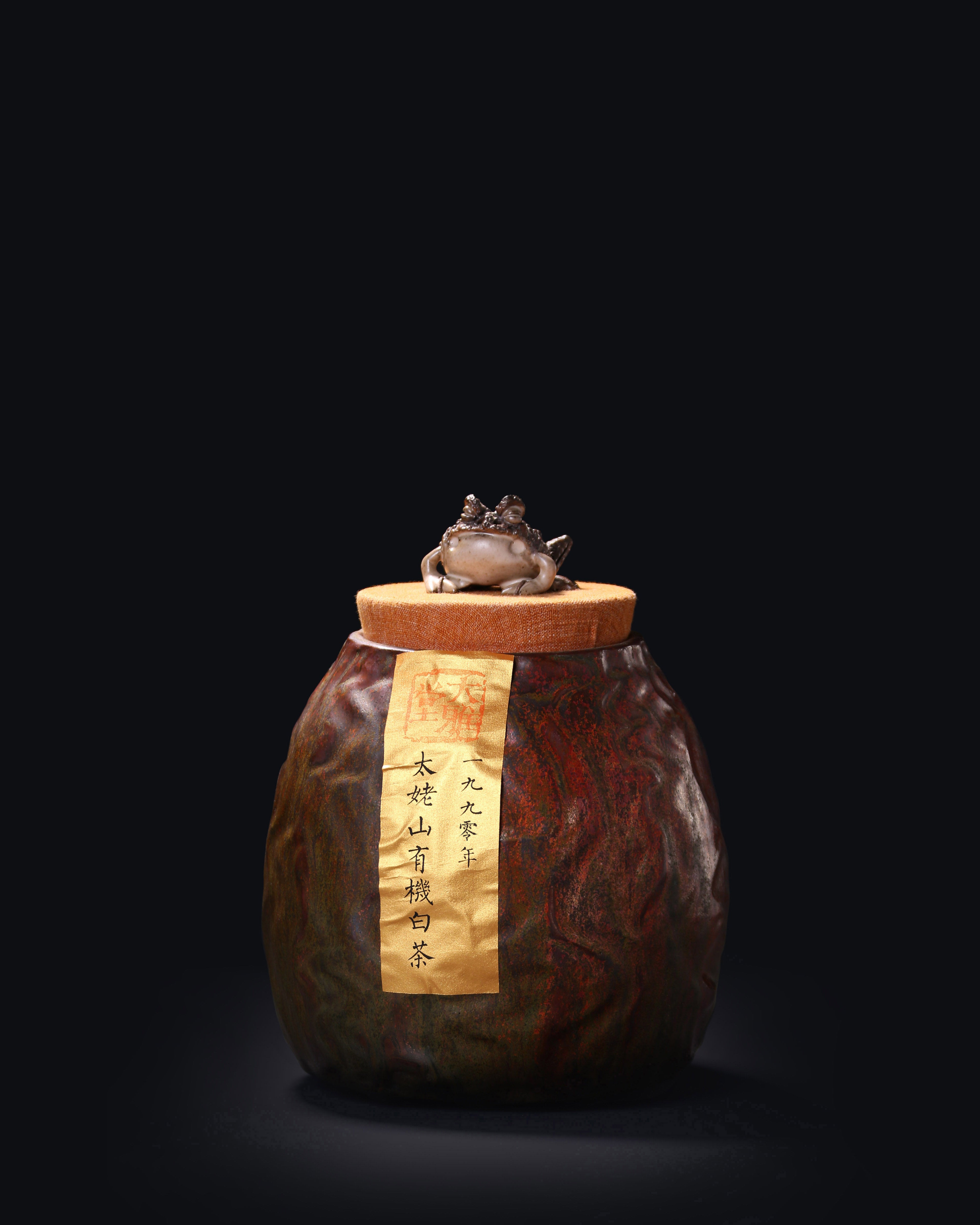

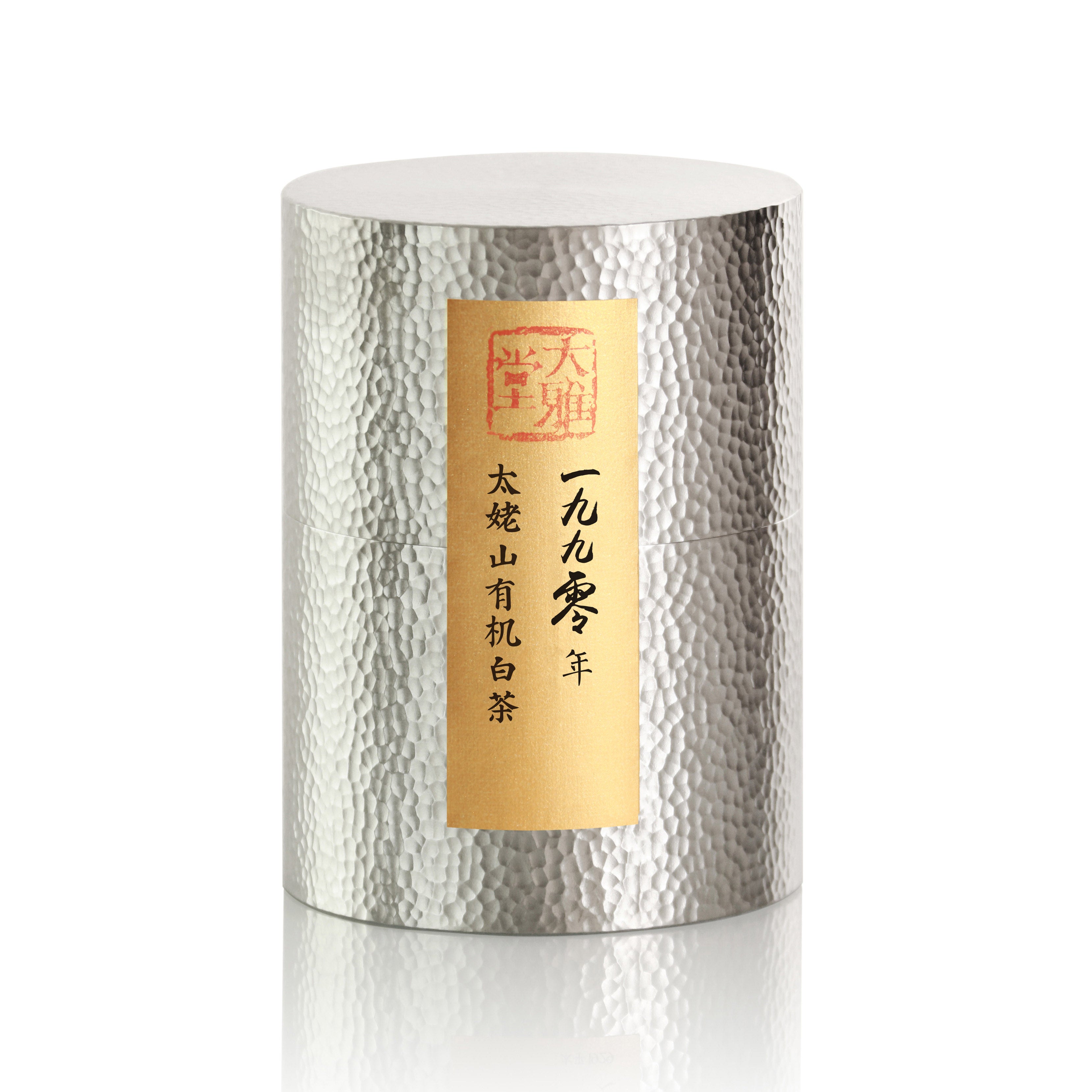


1990 Taimushan Organic White Tea







1990 Taimushan Organic White Tea
Time flew by, and two years passed in the blink of an eye. When I went into the mountains in the Guimao Year (a year in the traditional Chinese lunar calendar), the temple had already changed ownership.
In fact, when I said goodbye to the Venerable Master after celebrating the New Year with her on Mount Taimu the year before last, I knew in my heart that it would likely be the last time I saw her.
On this trip to Mount Taimu—coming to visit the tea plantations—I already knew that the 95-year-old Venerable Master had gone to live in retirement. Yet a persistent wish in my heart still made me want to take a distant look at the temple that once was. When I arrived here, I saw the temple was empty and its inhabitants gone; even the temple’s name had been changed. A wave of sorrow welled up in my heart involuntarily.
The platform where the Venerable Master used to scatter seven grains of rice in reverence to heaven was still there—only no one would ever hold that solemn ritual there again.
The small vegetable plot the Venerable Master once tended no longer had any vegetables left—only the two big trees remained, still as beautiful as a classical oil painting. The Venerable Master would never return here again; the vegetables were gone, yet nature still burst with vitality.
I was eager to see the Venerable Master’s old tea trees, but when I went to visit them, I found the usual ladder had been removed. I fetched another ladder to climb up, only to find the area was so overgrown and desolate that it was impossible to get in. That once vibrant tea plantation was now nothing but thorns and emptiness, and a sense of loss involuntarily arose in my heart. The story of the Venerable Master and this white tea plantation had thus become nothing but a memory.
The temple has changed hands, been renamed, and is now deserted.
The altar for the seven grains of rice offered by the nun to Heaven is still there, but no one holds that solemn ceremony there anymore.
That once vibrant tea garden is now nothing but thorns and desolation, and I can't help but feel a sense of loss.
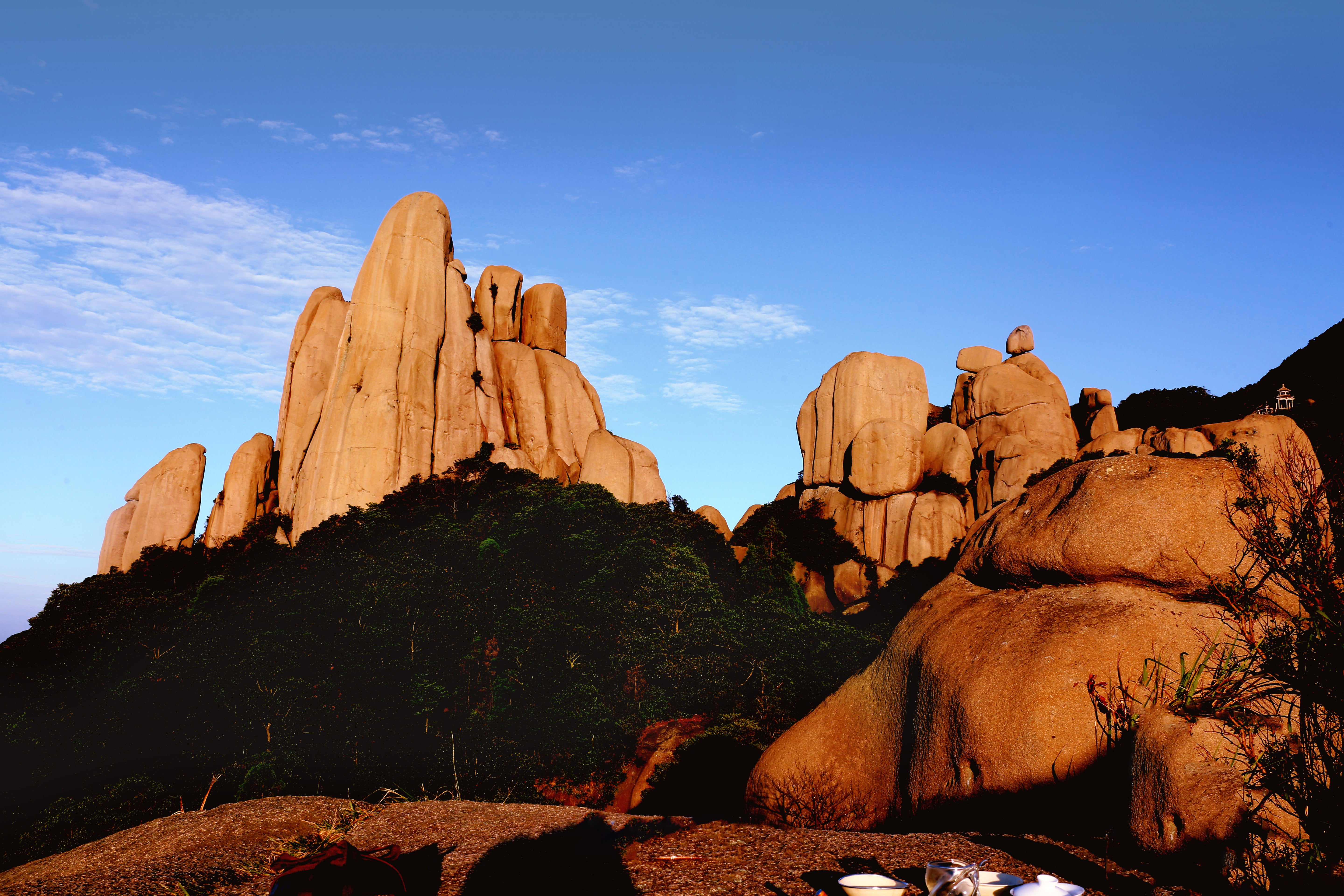
I brewed a pot of aged white tea, gazing at its orange-red, translucent liquor—clear and bright like red agate—while fondly remembering the Venerable Master.
Having undergone the baptism of time, the aged white tea exuded a rich, mellow medicinal aroma and aged charm. It was as mellow as Mount Taimu itself, and as lasting as the warm thoughts I held for the Venerable Master.
Life is short, yet heaven and earth are boundless—and white tea endures forever.
Sipping the tea with its medicinal fragrance, I walked back outside the temple once more—
Earlier, when I looked for a ladder to get closer to the tea plantation, all I saw was a path overgrown with thorns—there was nowhere to set foot. Now, as I gazed at these old tea trees again, the insect bites on their leaves seemed to tell of the Venerable Master’s compassion for all living things.
Mist still condensed on the white tea leaves from dawn till dusk: it turned to water, dripped down, and condensed again time and time again, remaining shrouded in ice and mist as always—never changing.
I recalled how, two years ago, the Venerable Master told me she could no longer dig the vegetable plot. There was a hint of regret in her eyes as she said she truly wished she could still make a little black tea for us to taste. But now, she felt her strength had declined significantly, and she might no longer be able to make tea the following year...

The white tea bushes beside the old temple still grow in their most natural state—nurtured by heaven and earth, with a pure, unadulterated flavor—leaving others to judge its quality as they will.
Looking at these old tea trees, I cannot help but sigh: Life is short, and time is unforgiving. The Venerable Master spent her days with white tea and in harmony with nature. Her story will eventually drift away into these mountains, yet it will also be forever sealed in my memory.
yet the tea's lingering charm endures long
Life is short
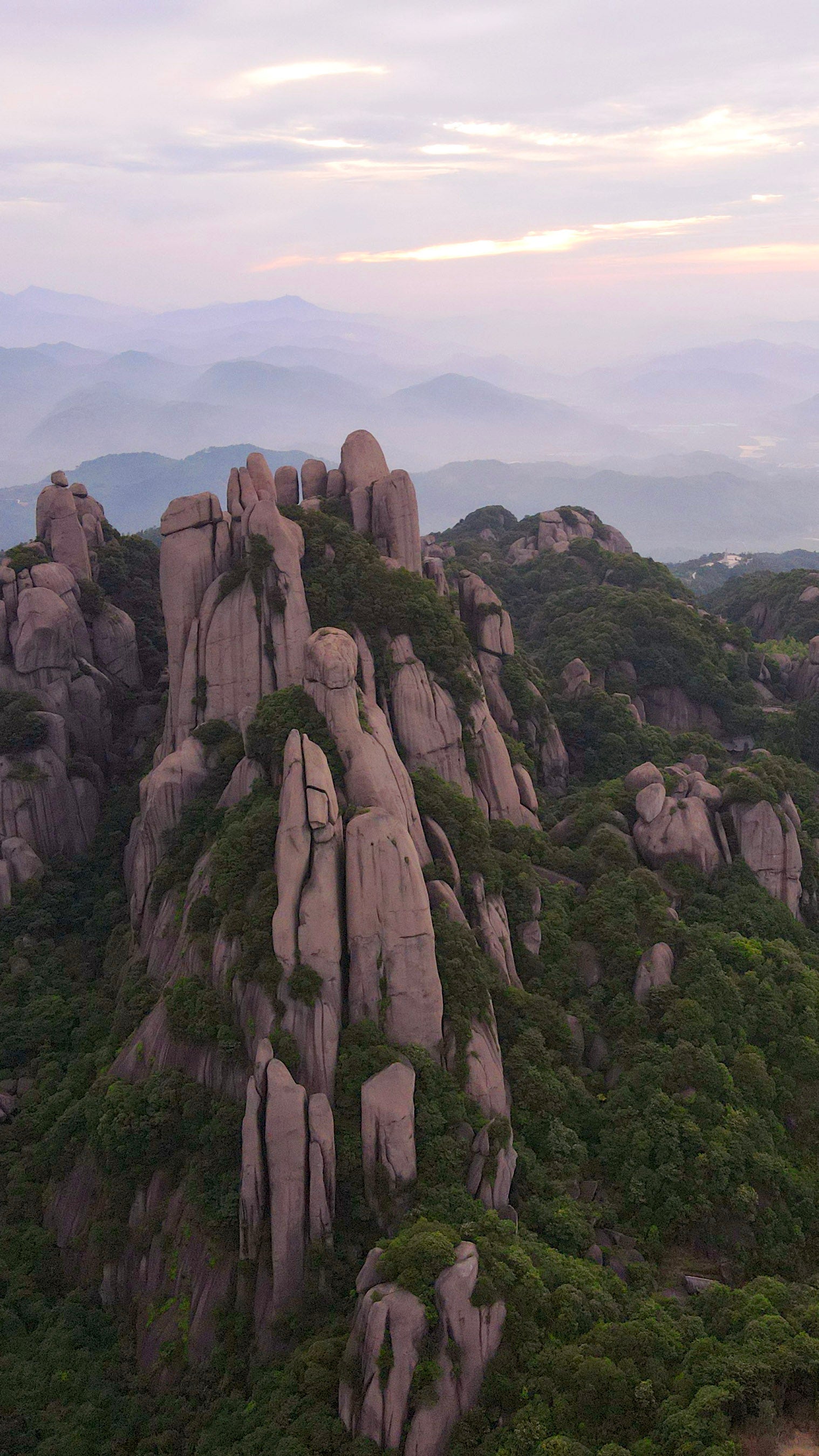
Pair text with an image to focus on your chosen product, collection, or blog post. Add details on availability, style, or even provide a review.

人生苦短

Pair text with an image to focus on your chosen product, collection, or blog post. Add details on availability, style, or even provide a review.
1990 Taimushan Teacher's Taibai Tea Tasting
This white tea embodies the terroir of Mount Taimu.
After thirty years of aging,
It preserves the exquisite craftsmanship of white tea from the 1990s.
It embodies the profound character refined by time.
Appearance : The dry tea leaves exhibit characteristics of refined white tea from the 1990s, being relatively tightly rolled. Over time, the color has deepened to a dark brown, with a uniform hue. There are no obvious impurities or spots. It displays the neat, orderly shape characteristic of refined tea from that era. This is the result of the combined effects of time and specific processing techniques.
leaf base
After brewing, the tea leaves turn brown. When gently rubbed between the fingers, they still feel resilient. The color is uniform and even, without any abnormal colors such as scorch spots or yellow spots, indicating good internal quality and aging of the tea.
The tea liquor is a bright, clear orange-red, as translucent as red agate, with a distinct transparency under light. As the number of infusions increases, the color changes relatively steadily, gradually transitioning from an initial orange-red to a lighter orange-red, while maintaining a clear and lustrous appearance, showcasing the rich and balanced release of the tea's internal qualities.
Aroma : A rich, medicinal, and aged fragrance, a unique aroma developed over many years. The aroma is deep, mellow, and long-lasting, carrying the scent of time.
Taste <br/>Mellow: This 1990 aged white tea has a rich medicinal aroma and a significant aged fragrance. The tea soup is mellow and full-bodied, smooth and mellow on the palate, with a rich mouthfeel and a certain thickness and texture.
Sweet
It has a sweet taste with a quick and pleasant aftertaste, and you can feel the sweetness.
It has a unique aged flavor, which develops during long-term storage and is a distinctive characteristic of aged white tea. It is very resistant to multiple infusions.
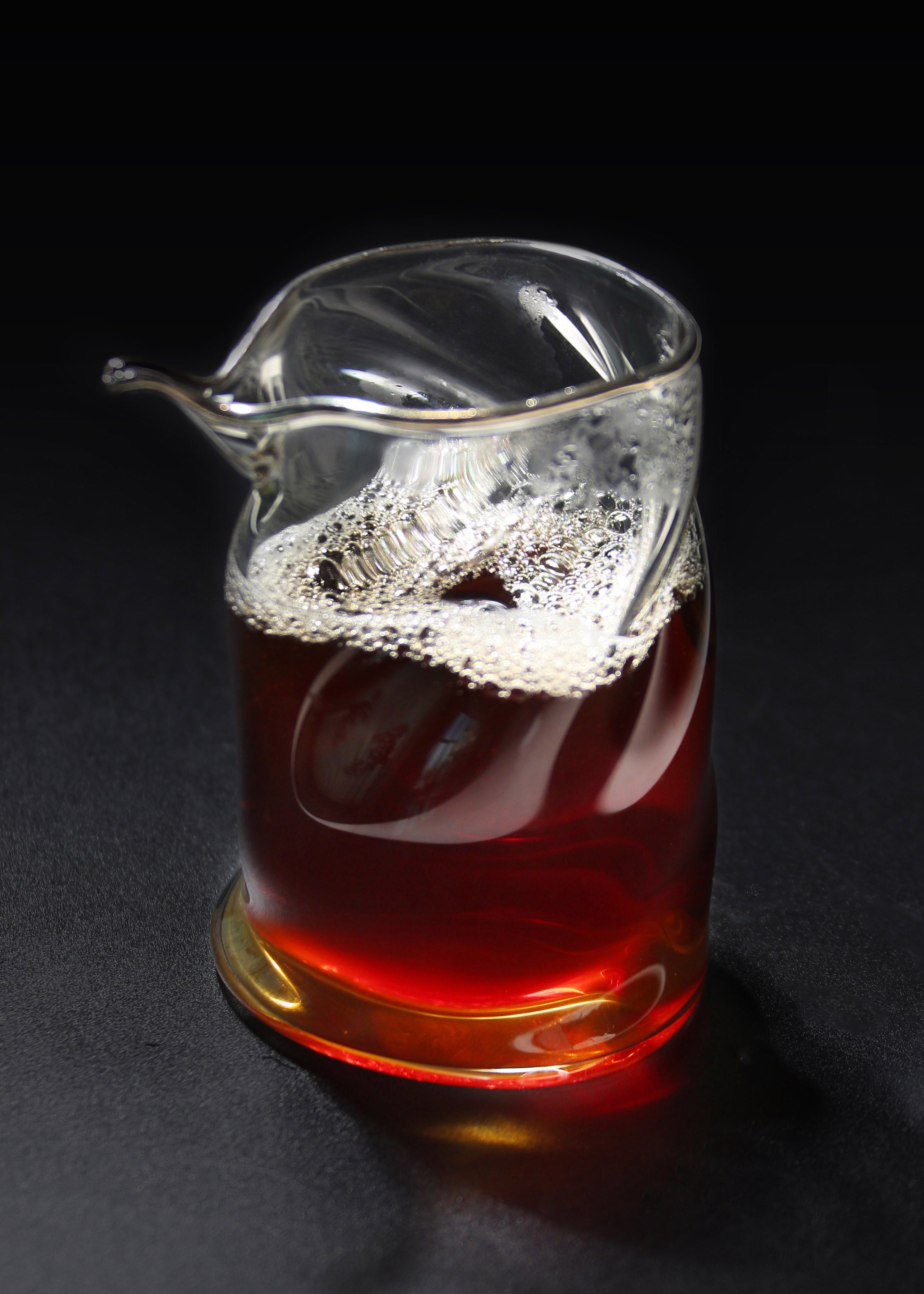
Its soup is a bright orange-red color, like red agate.
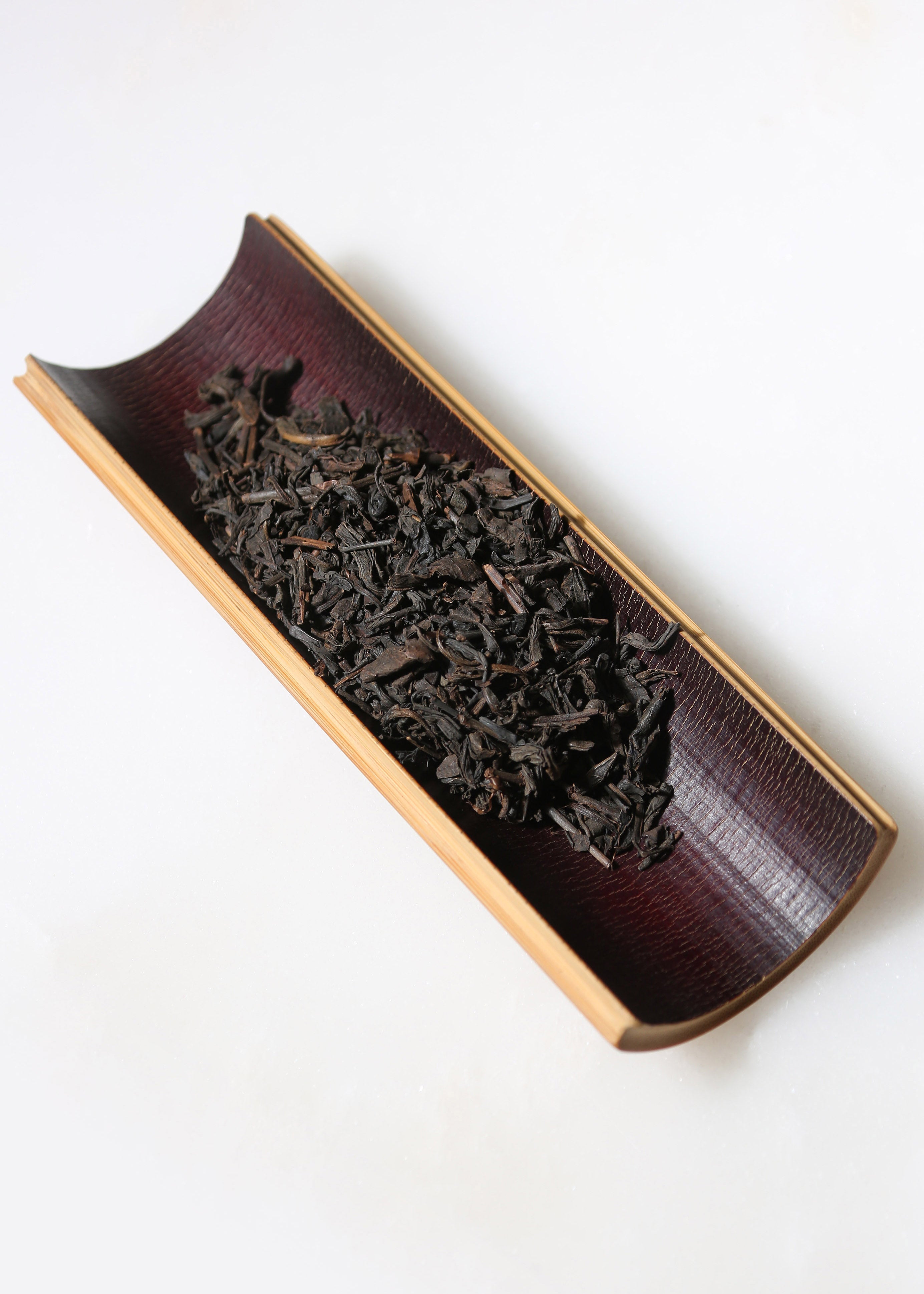
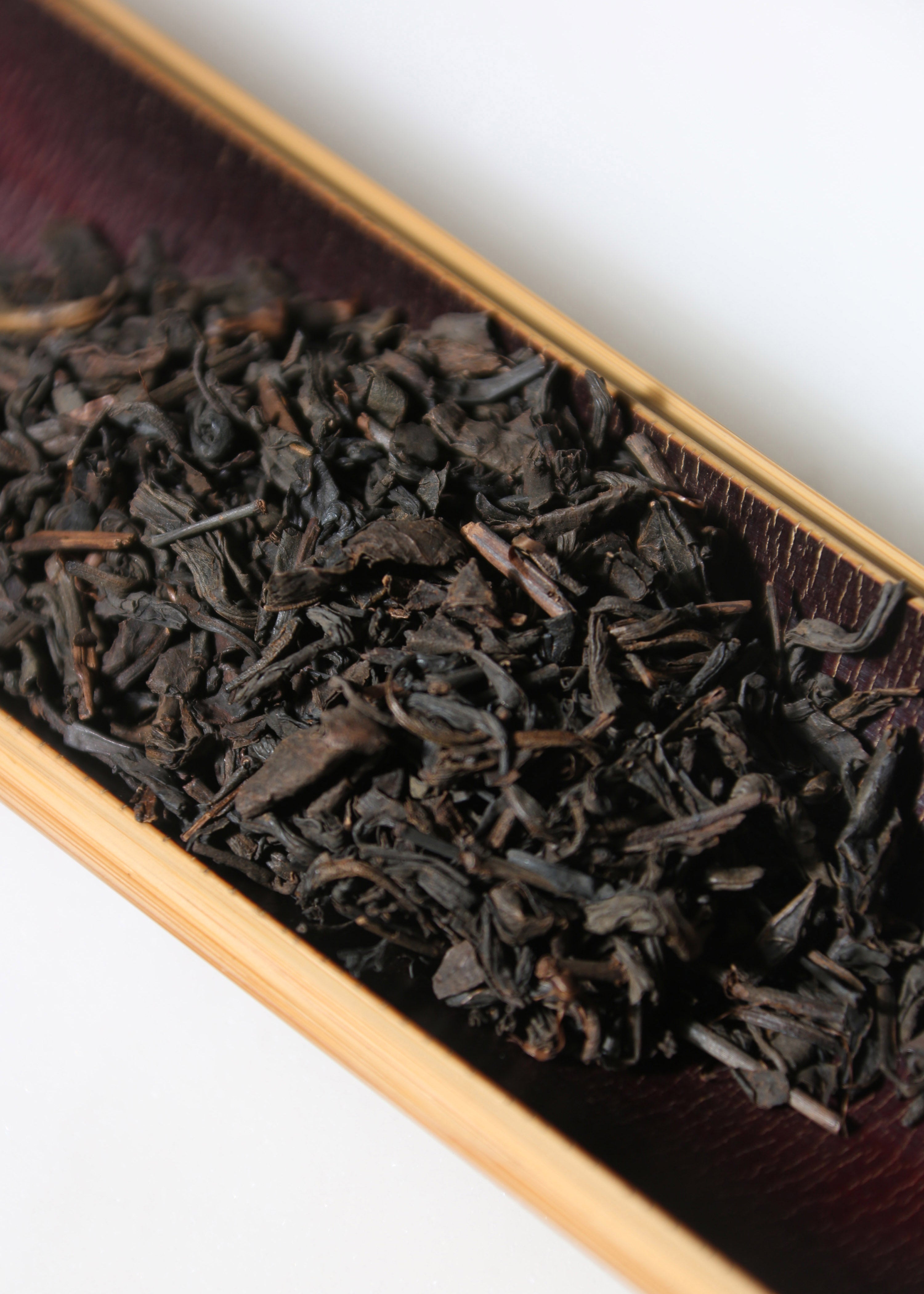
Dry tea leaves: Characteristics of refined white tea from the 1990s, relatively compact.
Medicinal efficacy
- Antioxidant and anti-aging: Aged white tea is rich in antioxidants such as flavonoids and tea polyphenols. These substances can effectively remove free radicals in the body, reduce oxidative damage to cells, and thus help slow down the aging process and maintain the vitality of bodily functions.
- Increase appetite
- "Three Antis and Three Reductions": The "three antis" refer to anti-oxidation, anti-inflammation, and anti-allergy; the "three reductions" refer to lowering blood pressure, lowering blood lipids, and lowering blood sugar. The active ingredients in aged white tea help regulate the body's immune and metabolic systems.
- Clearing heat and reducing fire, relieving summer heat and detoxifying: White tea is cold in nature. For those with internal heat, summer heat, or mild food poisoning, drinking an appropriate amount of aged white tea can have a certain effect of clearing heat and reducing fire, relieving summer heat and detoxifying, and alleviating symptoms of internal heat such as sore throat and swollen gums.
Note: Although aged white tea is both a beverage and a traditional Chinese medicine, containing ingredients with health benefits, it should never be used as a medicine to treat diseases on your own. The actual effect varies from person to person, and you must seek medical attention promptly if you feel unwell.
1990 Taimu Mountain White Tea Brewing Guide

Awakening the charm of time
It is recommended to remove the tea leaves from the sealed container 1-2 weeks before drinking, put them into a breathable cotton paper tea bag or a purple clay jar, and place them in a cool, dry, and odorless environment to let the tea leaves awaken naturally, allowing them to have slight contact with the air, gradually release the storage aroma, and activate the substances contained within.
If time does not permit this, you can warm the Yixing teapot or gaiwan with boiling water before brewing, then put the tea leaves in and steam them (without covering) for 5-10 minutes. The warm environment will help to activate the old tea and remove any slight off-flavors.
Selecting teaware to complement the flavor of tea
We recommend using a glass tea maker (800-1000ml capacity) to easily observe changes in the tea's color; for a richer, more mellow flavor, you can use a coarse earthenware teapot, whose absorbency can further enhance the smoothness of the tea.
Auxiliary tools: fairness cup, filter.
Soft water brings out the true flavor of tea
Use qualified purified water. Hardness < 50 mg/L.
Do not use tap water. If you are not familiar with water quality, do not use any brand of mineral water. Alkaline mineral water (pH > 7.5) will make the tea soup cloudy, cause excessive caffeine extraction, and result in a rough taste with a "cooked" flavor. Hard water should not be used, as the magnesium ions (> 150 mg/L) in hard water will combine with tea polyphenols to form insoluble substances, causing the tea soup to become dark and cloudy, and increasing bitterness.
1990 aged white tea for brewing
Warm the pot and stir-fry the tea
Dry the teapot, heat it over low heat for 30 seconds, add 5g of tea pieces, gently shake the pot, and stir-fry for about 1 minute until you can faintly smell a burnt aroma (do not burn).
Brewing tea:
Add 5g of tea leaves and 3-5 pitted dried dates. Add 500ml of water, bring to a boil over high heat, then reduce to low heat and simmer until small bubbles appear on the surface. Simmer for 2 minutes, maintaining a gentle simmer (slight ripples on the surface). After turning off the heat, let it steep for 5 minutes to fully extract the tea's components using the residual heat.
The tea soup is a deep amber color, thick and honey-like in texture, with a blend of aged aroma, medicinal aroma (Isatis root and Poria cocos aroma) and the roasted aroma produced by frying tea. It is smooth on the palate and has a sweet aftertaste reminiscent of rock sugar.
Tips for continuing to cook:
Second brew: After the first brew, add warm water (about 80℃) to the original water level, bring to a boil over high heat, then simmer over low heat for 1 minute to avoid excessive extraction of the tea's components and resulting in a weak tea soup.
Number of times to brew: It can be brewed 3-4 times. The sweetness of the last brew is particularly prominent. You can extend the steeping time (8-10 minutes) to fully experience the change of "the more you brew, the sweeter it gets".
The Secrets of Time in 1990 Aged White Tea
Taste: The tea soup has a prominent medicinal aroma (such as Isatis root and Poria cocos), a woody aroma, a mellow aged aroma, a long-lasting sweet aftertaste, and a hint of rock sugar sweetness in the final sip.
The color of the tea soup gradually changes from amber to reddish-brown, and from the dark amber color of the first brew to reddish-brown, always remaining clear and bright. The concentration of the tea soup can be judged by the depth of the color (deeper color means stronger flavor, lighter color means sweeter flavor).
With proper brewing, the aged charm of 1990 white tea can be fully revealed, and each brew can bring a rich and layered taste experience.
Water temperature and heat control precautions:
Avoid boiling over high heat for more than 3 minutes (especially when boiling dry tea directly) to prevent caffeine from being extracted and producing a bitter aftertaste.
The Philosophy of Brewing Aged White Tea
The essence of brewing 1990 aged white tea is to "awaken time with time"—it is a "dialogue" between people and tea, and to feel the changes in layers through the rhythm of pouring the tea.
Boiling is the "fusion" of water, fire, and tea, allowing the essence accumulated over time to unfold in boiling water, experiencing the taste of time that is "sweeter the longer it is boiled, and warmer the more you drink it".
water quality
Choose qualified purified water; do not use alkaline mineral water .
(The water quality of commercially available mineral water varies depending on the water source and the brand. So-called "high-quality mineral water" may cause loss of functional components and inhibition of aroma in tea.)
Part 1: The Effects of Alkaline Water on Tea
1. Effects on the color of tea liquor
green tea:
Under alkaline conditions, chlorophyll is easily destroyed (chlorophyll stability decreases at pH > 8.0) , causing the tea liquor color to easily change from bright green to yellow or dark yellow, resulting in turbidity , especially noticeable when brewed at high temperatures. Flavonoids (such as catechins) in green tea are easily oxidized in an alkaline environment, exacerbating the darkening of the tea liquor color.
black tea:
Theaflavins (bright orange-yellow) are easily oxidized to thearubigins (dark red) under alkaline conditions, and further generate dark brown, causing the soup color to change from bright red to dark and lose its transparency .
Other types of tea:
The color of oolong tea, white tea, and yellow tea may be darker due to alkaline water. The color of black tea (such as ripe Pu-erh) will become more turbid, and the color stability of aged aroma substances will also be affected .
2. Impact on taste and texture
Analysis reveals differences:
Tea polyphenols and caffeine: lead to insufficient concentration and bland taste . An alkaline environment inhibits the dissolution of tea polyphenols (bitter substances) and caffeine, reducing the bitterness of the tea soup.
Amino acids and sugars: Disruption of amino acid structure reduces the freshness and crispness.
Mineral influence: Alkaline hard water (containing more calcium and magnesium ions) combines with tea polyphenols to form insoluble precipitates (such as "cloudiness after cooling"), resulting in cloudy tea soup and a rough taste .
Balance of taste: It significantly affects the "richness" of tea soup for teas that rely on polyphenols to support their taste (such as raw Pu-erh tea and high-roasted rock tea), with no noticeable aftertaste and an overall taste that is bland and coarse .
3. Effects on aroma
Volatile aromatic substances: An alkaline environment may accelerate the degradation or transformation of aromatic substances (such as aldehydes and alcohols), resulting in a single aroma profile, especially in light-aroma teas (such as jasmine tea and Anji white tea), where the floral fragrance dissipates easily and may even develop a "mushy" taste.
Aged aroma and woody aroma: For fermented teas such as black tea and aged Pu'er, alkaline water may slightly highlight the aged aroma (pH>8.0) and suppress the fruity or honey aroma.
Second: The adaptability of different types of tea to water quality
1. The interaction between the physicochemical properties of water and tea components
- Hard water (>120 mg/L CaCO₃) : Calcium ions combine with tea polyphenols to form precipitates, reducing the astringency of tea soup (EGCG binding rate can reach 23%), but losing antioxidant activity (Food Chemistry, 2018); Magnesium ions promote caffeine dissolution, and every 1 mg/L increase in magnesium can increase the caffeine concentration by 0.8% (Journal of Agricultural and Food Chemistry, 2020).
- Soft water (<60 mg/L CaCO₃) : Theaflavin dissolution rate increased by 12%, and the brightness of the tea soup increased (L* value increased by 3.2), but the amino acid extraction efficiency decreased (Food Research International, 2019).
2. Supported by scientific experimental data
- Longjing green tea brewing experiment (TDS = 50 vs 300mg/L) : The amino acid content of the tea soup in the soft water group (1.2mg/mL) was significantly higher than that in the hard water group (0.8mg/mL), but the caffeine content was 18% lower (China Tea Processing, 2021); Sensory evaluation showed that the freshness score of the soft water group was 1.7 points higher (out of 9), while the body of the hard water group was 0.9 points higher.
- Research on water quality suitability for Wuyi rock tea : Water containing trace amounts of sulfate (20-50 mg/L) can increase the dissolution of cinnamaldehyde, a characteristic aroma compound of cinnamon, by 24% (GC-MS detection), and significantly enhance the rocky aroma (Tea Science, 2020).
3. Water quality selection recommendations (based on tea)
| Tea | Ideal TDS | Recommended pH | Key ion requirements |
| FTL Green Tea | 30-80mg/L | 6.8 | Ca²⁺<15mg/L, Mg²⁺<5mg/L |
| FTL Oolong Tea | 80-150mg/L | 7 | HCO₃⁻ 40-60mg/L |
| FTL Black Tea | 100-200mg/L | 6.8 | K⁺ 2-5mg/L, SiO₂ 10-15mg/L |
| FTL Pu-erh Tea | 50-120mg/L | 6.8 | Fe³⁺ < 0.1 mg/L |
4. Examples of the impact of special water quality
London tap water (high hardness) : When brewing black tea, the formation of oxalool-calcium complexes leads to "cold turbidity" appearing 30 minutes earlier, with the turbidity (NTU) of the tea reaching 12.5, which is significantly higher than that of the soft water group (NTU = 4.3) (Food Hydrocolloids, 2019).
Kagoshima hot spring water (containing sulfur) : Sulfides react with theaflavins to form methyl flavonoids, which reduces the umami intensity of sencha by 37% (*Journal of the Japanese Institute of Food Science and Technology, 2022).
The quality of water from a particular source can enhance the color, aroma, and flavor of local tea, but using local water requires systematic professional knowledge and is very costly. For non-professionals, mastering the basic principles of "soft and clean water + temperature control" is far more practical than pursuing famous springs from their place of origin.
The precise matching of water and tea is essentially a dialogue of geographical genes, which needs to be built on a multidisciplinary system of geology, food chemistry, heat transfer and other disciplines, and cannot be covered in just a few lines of web pages.
The UK-based AquaSim laboratory has simulated 12 core indicators of Tiger Spring water. However, it lacks the original spring's microbial community (such as Nocardia tea-loving bacteria), resulting in a 27% difference in post-fermentation flavor. In addition, the operation is complex: it requires mastering the "listening to the spring while boiling water" method (stopping the fire immediately when the water first boils), and a temperature error of more than 3°C will disrupt the flavor balance.
The charm of tea ceremony lies in appreciating what suits one's taste.
A pot of purified water is enough.
Don't be trapped by the mystique of water quality.
Package
"Made with a thousand hammers and ten thousand refinements" handmade pure tin can:
Height: 15cm, Diameter: 11cm, Net weight of tea: 100g
This pure tin can, crafted by Sheng Yiyuan, an inheritor of the Yongkang tin carving intangible cultural heritage, is shaped by thousands of hand hammerings, resulting in a delicate and smooth texture. Each hammer mark, varying in depth, is not a repetitive imprint but a vivid testament to the warmth of handcrafting, carrying the profound meaning of intangible cultural heritage craftsmanship. The interior is meticulously polished using precision CNC technology, resulting in a smooth, non-rough surface. The lid, achieved through high-precision technology, ensures a tight seal, blending the warmth of handcrafting with the precision of modern techniques, preserving both ancient charm and practicality.

Height: 15cm, Diameter: 11cm, Net weight of tea: 100g

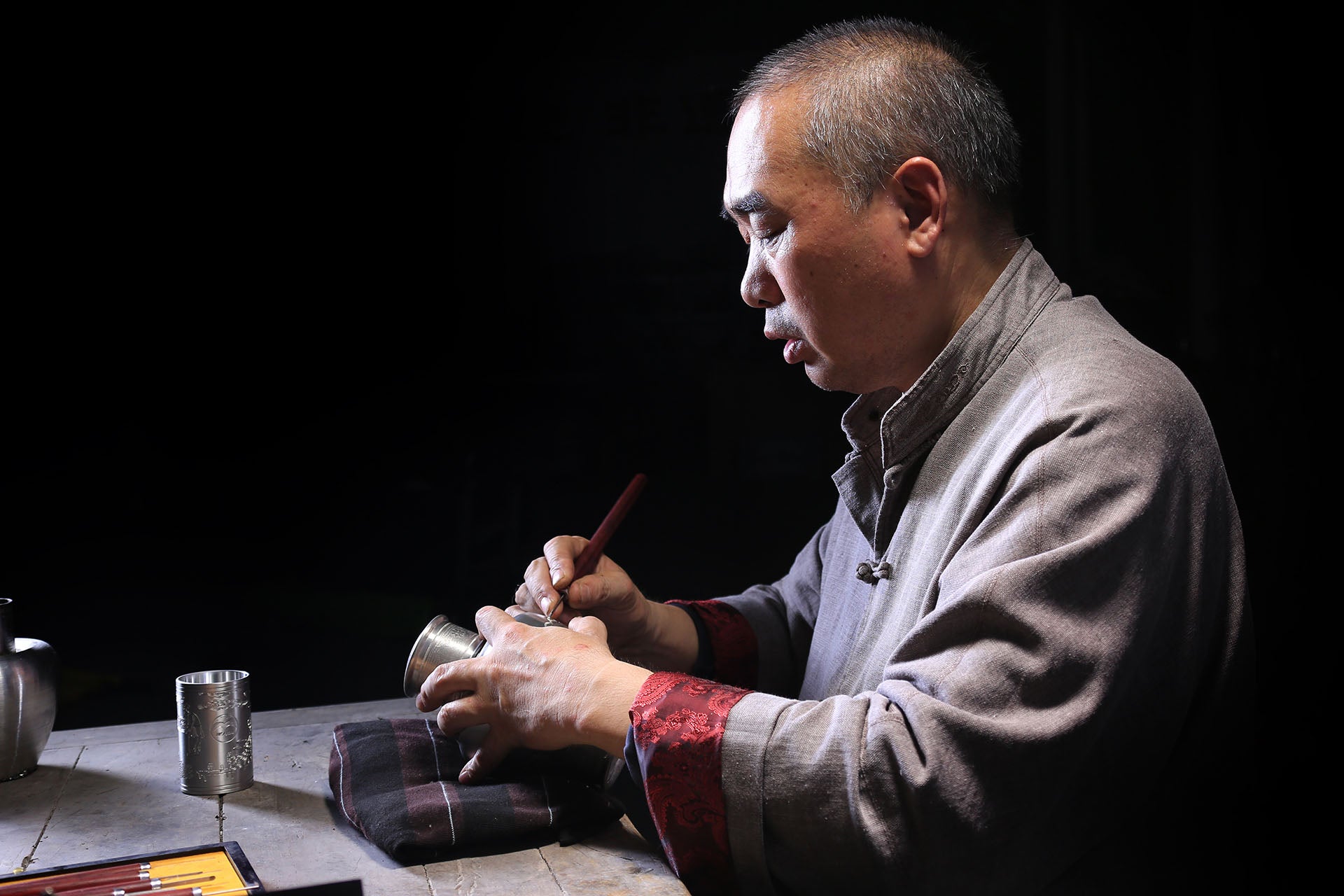
Sheng Yiyuan, inheritor of Yongkang tin carving intangible cultural heritage

Specifications: Diameter 17cm, Height 23cm.
Handmade Ceramic Tea Jar by Master Lin Yijie
The charm of tea ceremony lies
in what suits you as precious
A pot of pure water is enough
Don't be trapped by water quality metaphysics
White tea storage
White tea is cold in nature, and its cooling effect increases with age. It can be used as medicine after three years and become a treasure after seven years of storage.
White tea storage
Avoid light, high temperatures, and odors.
Temperature & humidity: 15-25℃, 50%-65% (to prevent mold and loss of fragrance);
Light Protection & Ventilation: Keep away from direct sunlight (to prevent the decomposition of theaflavins and darkening of the tea liquor) and place in a well-ventilated area.
No odor interference: Keep away from sources of odor such as cooking fumes and spices.
Container selection
Short-term (within 1 year): Purple clay/ceramic jar with ventilation holes (for preservation);
Long-term (over 1 year): Aluminum foil bag (semi-vacuum) + moisture-proof cardboard box (aids conversion).
Taboo
Avoid Storing In: kitchen, bathroom, balcony, or refrigerator.
Minimize container movement. Check every 1–2 months: the tea should remain loose, free of mold, and odorless.
Shoumei/Gongmei: Store per long-term standards — they easily develop jujube aroma with aging.
Peony/Silver Needle: Short-term storage can use a purple clay jar; long-term storage requires moisture protection.
Shelf life
The above storage method allows for long-term storage.






